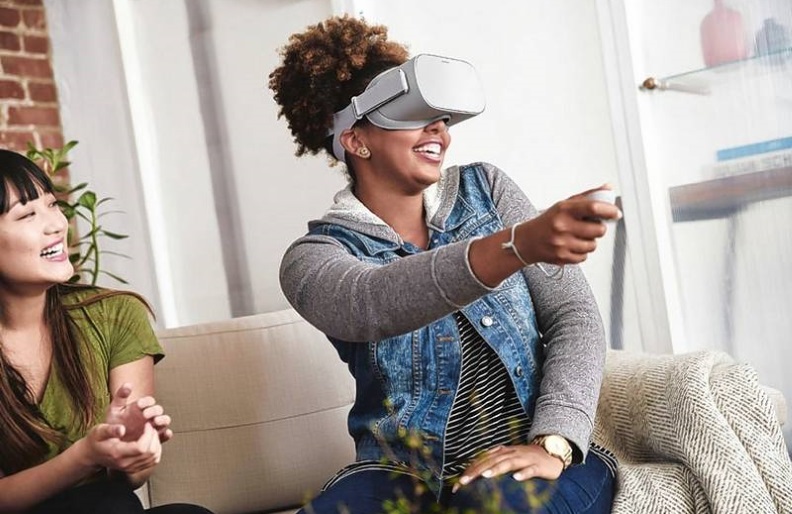Facebook dropped a bombshell on the virtual reality world Wednesday: a $200 virtual reality headset that doesn’t require wires or a smartphone to work.
The headset could go a long way to helping Facebook get virtual reality into the hands of a “a billion people” — a (timeframe-free) goal chief executive Mark Zuckerberg set Wednesday at a developers conference hosted by its VR company Oculus. Virtual reality has been a major focus for Facebook and other major tech firms such as Microsoft and HTC, but consumers haven’t been quite as enthusiastic. The new headset, however, addresses two major problems analysts have said stand in the way of adoption: high prices and a complicated setup process.
The price of virtual reality headsets has continued to drop, making the technology more accessible to a variety of people. Setting a $200 price for a headset that doesn’t require any additional equipment, however, is a new landmark for the industry.
The Oculus Go is set to ship early next year. It will be able to use all the apps currently available for the Gear VR, the Samsung and Oculus headset that requires a smartphone to work. Developers will be able to get their hands on Oculus Go in November to make more specialized programs for it.
Like the Gear VR, the Go is designed to be for lighter virtual reality experiences such as 360-viewing or short play sessions. It will also ship with a controller that users can hold in one hand, to point, poke or otherwise interact with the environment around them.
The Go won’t be the only stand-alone headset from Oculus for long. The company also gave more information on a product nicknamed Project Santa Cruz, which promises to offer high-end VR without wires or the external trackers that VR users currently have to set up around their rooms. That device will ship to developers next year, but does not yet have a commercial release date.
Facebook also announced plans to introduce streaming 360-degree video to Oculus as well as Facebook Spaces, the network’s “social VR” space that Zuckerberg controversially used to virtually tour Puerto Rico earlier this week.
The social network also said that users will now be able to create “3-D posts,” which let you embed three-dimensional drawings into your posts, which you can then move around on screen.
All of these features slowly articulate the advantages of three-dimensional and virtual reality content, which has its converts in the gaming world but has faced a more skeptical mainstream audience that has yet to see the value.
Even evangelists recognize this isn’t going to happen overnight. “The road to mass adoption is going to take a while,” said Jason Rubin, Oculus’s vice president of content, but things are moving faster than he thought it would. “VR is just getting started. We’re going to double-down on that potential.”
This article was originally published by Daily Herald.

One comment